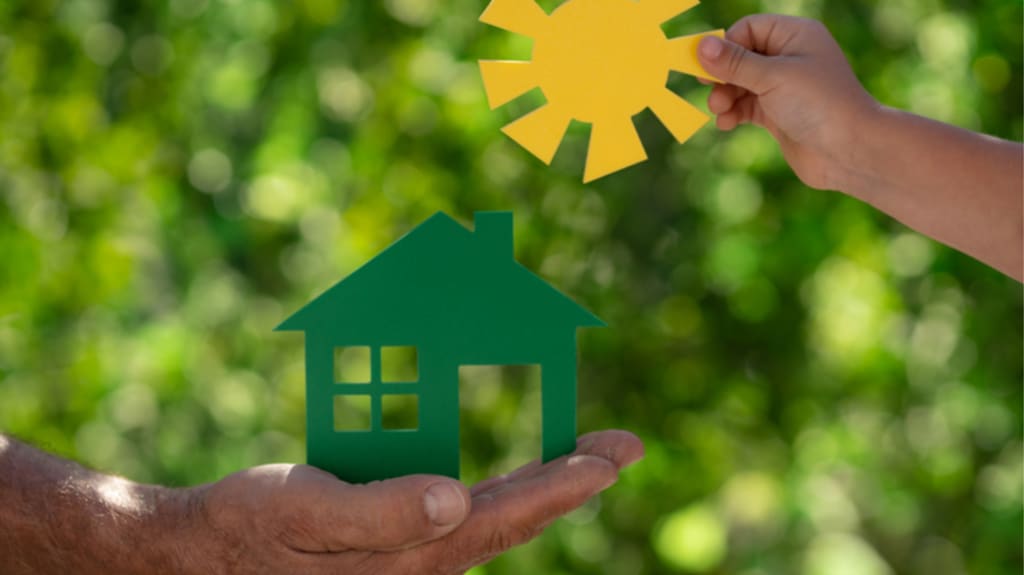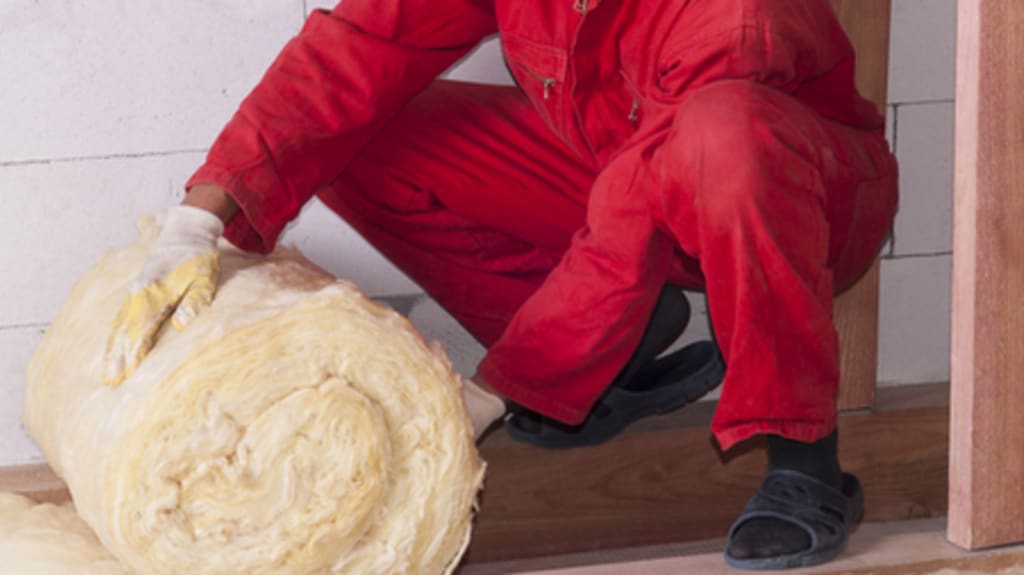So, you’ve read about energy-efficient retrofitting and you’ve got a few ideas about what you’d like to do to bring down your energy bill and make your home more environmentally friendly? Maybe you plan on replacing your water heater or installing solar panels to reduce your power bill. Well, you might be interested in the Canada Greener Homes Grant!
It’s designed to help homeowners make their homes greener, and it‘s available right now. This article will tell you what the grant covers and walk you through every step, from application to receiving your reimbursement cheque.
What is the Canada Green Homes Grant and how does it work?
The Canada Greener Homes Grant is a federal program that reimburses you up to $5,000 for qualifying energy-efficient renovations.
The process is pretty straightforward. First, you have your home evaluated by an EnerGuide energy advisor. When your evaluation is finished and you have your report in hand, you can start your retrofit. Once the retrofit is done, have your home evaluated one more time to make sure the retrofit really did make your home more energy efficient.
After that, submit your receipts for both evaluations (you can get up to an additional $600 for them), the materials purchased, and the services rendered. You’ll need to confirm the amount you’re asking for online and hang onto your paperwork for seven years in case the government wants to review it. Even better, if you live in Quebec, you can work in conjunction with Rénoclimat and still receive support from this green home grant.
Who is eligible for the Canada Greener Homes Grant?
Property owners are eligible for this grant! You’ll need to prove that you own your home (with a property tax bill number) and that you live there (with, for example, a driver’s license or a utility bill). If you live in any of the following, you are eligible for the program:
a single or semi-detached house
a rowhouse
a townhouse
an all-season cottage
a mobile home on a permanent foundation
a permanently-moored floating home (yes, your home can be a boat)
There are only two catches:
First, your home has to be at least seven months old according to your date of occupancy. The length of your ownership is determined by the day you apply for the grant. So, if you moved into a new house on March 1, 2021, you won’t be able to start the application process until October 1, 2021. Of course, if someone else owned the house before you bought it and more than seven months have passed since it was first moved into, you don’t need to worry.
Second, you can only claim materials purchased in Canada. You’re welcome to buy online, but the distributor has to be located in Canada or you won’t be able to get your money back. And, of course, you’ll need receipts for everything you buy and use.
What is covered under the Canada Greener Homes Grant?
Quite a bit, actually.
Air-sealing
Where you meet or beat the air seal recommendation made on your initial evaluation by locating and sealing points in your house where heated or cooled air can escape.
Heating equipment
Replacing your water heater, installing/replacing a ground source heat pump, or putting in an air source heat pump to lower your energy bill.
Home insulation
Whether it’s updating your attic, ceilings, exposed floor (yes, you can get reimbursed for insulating your garage), exterior wall, basement, or crawlspace, there is money waiting for your home insulation.
Renewable energy
Placing photovoltaic panels on your home that have a peak power capacity of at least one kilowatt pays $1,000 for the first kilowatt and an additional $1,000 for every additional kilowatt (up to five). You can even get compensated for connecting a battery to your panels.
Resiliency measure
Waterproofing your house’s foundation, moisture-proofing a crawlspace, and even putting a roofing membrane in place to prevent water leakage.
Thermostats
If you still have a manual one and want to replace it with a programmable, smart, or adaptive thermostat, this is your chance. You’ll be expected to combine it with another retrofit measure and it cannot be part of a new heat pump (which comes with its own) or a resiliency measure.
Windows and doors
The program pays for every window and door installed and you’ll be expected to leave the ENERGY STAR labels on them until your post-retrofit evaluation. The maximum reimbursement per rough opening is $250, but you can go all the way up to $5,000 if you have enough windows and doors that need replacing.

How do I apply for the Canada Greener Homes Grant?
Register online
Head over to the Greener Homes program website to sign up. It’s run on the Government of Canada website, so it gives you the option of using a sign-in partner (if you have an online account with any of the big five banks or sixteen other financial institutions, you can use your login for them) or a GCKey. Either is fine, just be consistent – if you change your login, you’ll be treated as a different person. Remember, if you are in Quebec, you just use Rénoclimat to register.
Schedule an EnerGuide evaluation
When you register, you’ll be taken through the process of booking an EnerGuide evaluation. The organizations that can help you will be provided by the government and organized by postal code according to how close they are to you. If you’ve never had an evaluation done or just want to brush up on how to prepare for it, there are guidelines available. Once the evaluation is finished, you’ll get an EnerGuide home rating with a label, a renovation upgrade report, and a homeowner information sheet with energy information about your home and how you can improve it.
Start your green renovation
Now you are ready to plan and complete your renovation! This is where RenoAssistance enters the picture. While it’s possible to plan major retrofits to what may well be your largest personal financial investment alone, it does help to have the support of a trained Renovation Advisor.
They can turn your aspirations into documented proposals and find you three 53-point Verified Contractors that fit your needs and budget. Your advisor will stay with you throughout the entire renovation process, help you schedule appointments with your contractor, and answer any questions you might have.
Getting reimbursed
After your renovation is finished, it’ll be time to book your post-retrofit evaluation. Log back into the program website and schedule your evaluation to get your new home rating, label, report, and information sheet.
Once the evaluation is finished, your energy advisor will file everything (including pictures of your house) with Natural Resources Canada within 30 days so you can review it on your account.
Confirm that everything is correct, submit your receipts (and an attestation form if you need to prove that a licensed professional installed something electrical or mechanical), and wait for your reimbursement to come. The grant is tax-free, so you won’t have to claim it as income when you file your tax return.
Can I still apply for the Canada Greener Homes Grant if I already have an energy-efficient home?
If you had your home renovated to make it more energy efficient after December 1, 2020, you can still receive the grant! That said, you will need prove that you had an EnerGuide evaluation completed before and after your renovation. If the pre-retrofit evaluation was done before December 1st, you won’t be able to get money for it, but you will still qualify for reimbursement on the post-retrofit evaluation.
The Canada Greener Homes grant summarized
By Anthony Granziol
Anthony Granziol is a freelance writer and academic editor who is interested in words, how people communicate, and why we say what we say. His bachelor’s degree in English and SSW diploma have given him a unique insight on helping people and the world we share. He has written for businesses, schools, nonprofits, and even himself. When he isn’t burrowing into articles, books, blogs, or essays, you can find him going for walks with his son, cooking for his family, or teasing text to make it leaner, clearer, and more expressive while keeping its intent just so.





